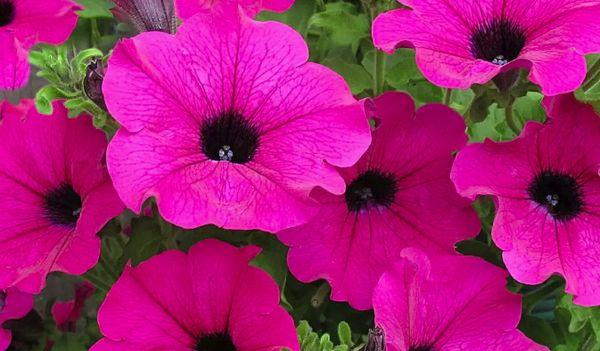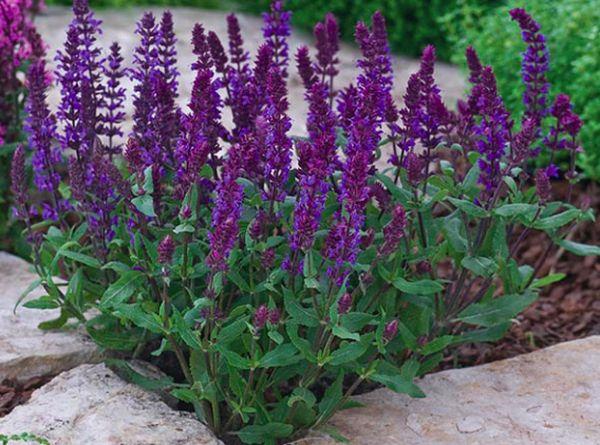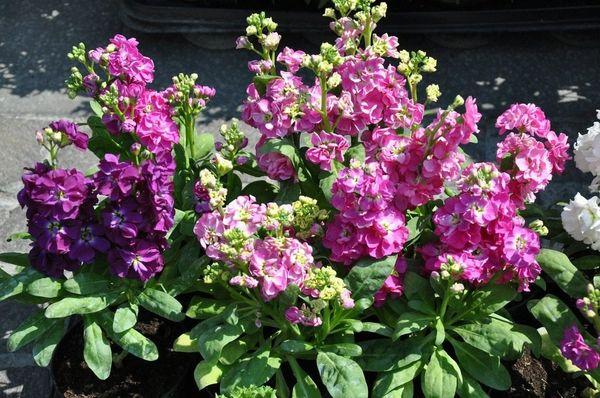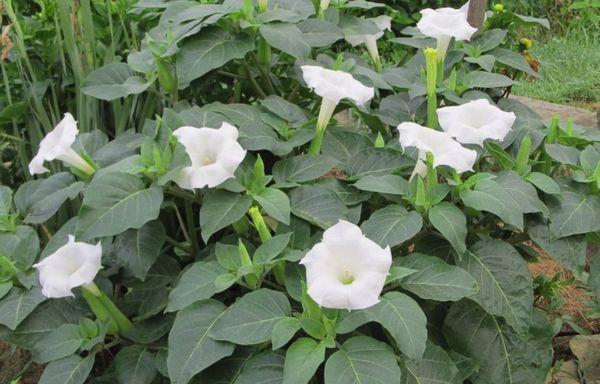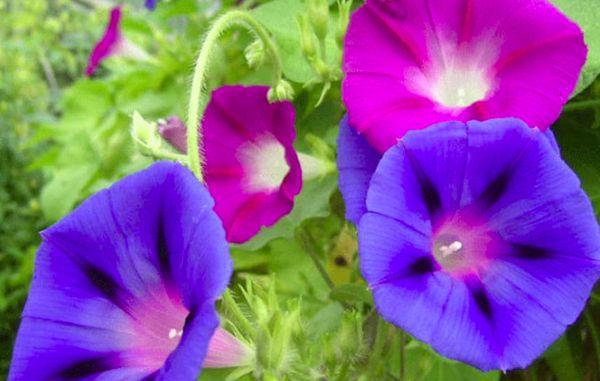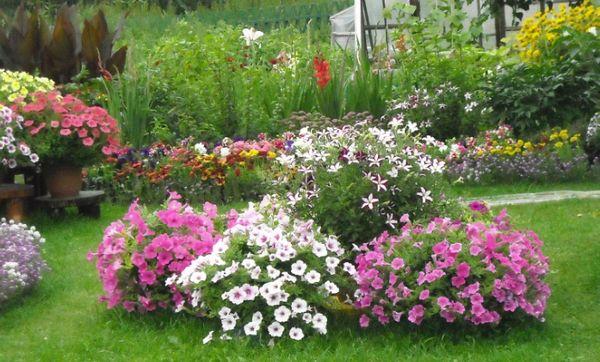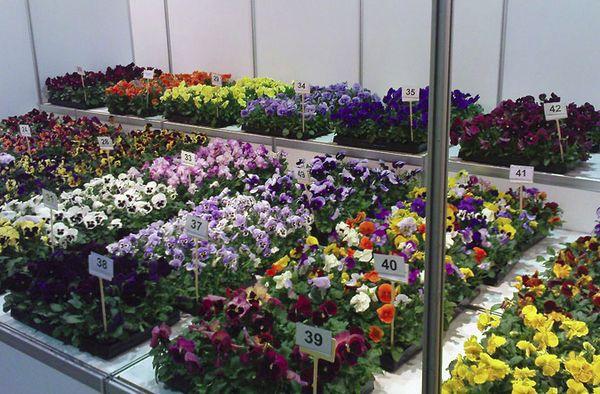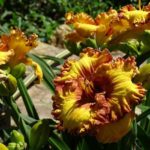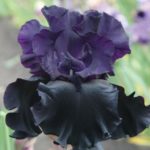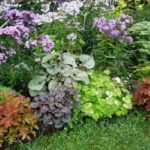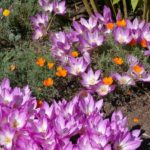Annual flowers are a real boon for a cozy cottage. They allow you to change the design of your flower bed every year, and the bright colors delight the eye all season long. The color scheme allows you to create unique compositions on the site. The main thing is to choose plants in such a way that their flowering period stretches from the beginning of warm days to the very first frost.
- Annual flowers for the garden
- short
- Petunia
- Lobelia
- Iberis
- Marigold
- Medium height
- Salvia (Sage)
- Verbena
- Zinnia
- Mattiola or Levkoy
- Tall
- Mallow or hollyhock
- Datura or Datura grass
- Amaranth
- Curly
- morning glory
- Sweet pea (china)
- Kvamoklit
- Rules for choosing annual flowers
- Things to consider before boarding
- Planting methods
- Planting annuals in the ground
- Planting through seedlings
- Care instructions
- Landscaping a dacha with annual garden flowers
Annual flowers for the garden
The variety of annuals allows you to admire the flower carpet in your dacha from summer to autumn. For the most part, these plants are unpretentious and resistant to the vagaries of the weather, but some of them have their own growing characteristics and require additional care.
short
Low-growing flowers look good on the side of the path, as well as in the foreground of flower beds and flower beds. Varieties and varieties make it possible to decorate flower pots and even plant them in pots and flowerpots.
Petunia
Petunia has gained popularity due to its rich color range. Some varieties of this plant have no smell at all, while others can fill the entire garden with aroma. The long flowering period makes it possible to admire the flower throughout the season. Not all varieties are able to reproduce by seeds.
Hybrids do not retain the properties of the mother plant. The most difficult thing for gardeners is to grow seedlings, because petunia can only germinate in an artificially created greenhouse. Violations of temperature, humidity or lack of air lead to damping off of the seeds. A beautifully flowering bush with its appearance compensates for all labor and material costs.
Lobelia
A low flower with very decorative qualities and a fairly rich range of colors. Flowering period from June to September. You can propagate the plant yourself using collected seeds. True, growing seedlings is not so easy, especially for novice gardeners, but it’s worth it. Lobelia is suitable for decorating flower beds, borders, and flowerpots.
Iberis
An elegant plant with white or purple flowers fills the entire summer cottage with its strong aroma. Growing low-growing Iberis is very simple. He does not require much attention or increased care. Looks great on alpine slides, emphasizing the texture of the stone, or in compositions. The flowering period begins in May and lasts a couple of months.
Marigold
One of the most beloved annuals by summer residents. This is not only a worthy decoration for a flower bed, but also a pest repeller. A long-flowering, unpretentious bush that amazes with its variety of shades and allows you to satisfy the individual needs of everyone. The flowering period begins in June and ends with the onset of cold weather. This plant looks great both in a flower bed and on borders, in flowerpots, and flower beds. It is used both in single and group plantings.
Medium height
Medium-sized annuals are used to decorate flower beds and flower beds. They are suitable both for creating unique design compositions in the flowerbed and for cutting.
Salvia (Sage)
This unusual garden decoration is also a medicinal plant. An unpretentious bright flower with a rich aroma. It is grown by seedlings. Planting is carried out not only in flower beds, but also along fences, at gates, and in small flowerpots.
Verbena
This unpretentious plant has about 120 varieties, which provides a wide variety of colors. In addition, it has medicinal properties. The flowering period lasts from June to October. The plant does not place excessive demands on care and planting location; it is used for cutting and lasts for a long time in bouquets.
Zinnia
Magnificent external characteristics, chic colors and unpretentiousness make zinnia a real find for a country flower bed.Especially if there is not enough time for care. With such a flower, the flowerbed becomes more elegant and brighter. It is also used for cutting into bouquets. It blooms in mid-July and fades with the onset of the first frost. It belongs to dried flowers, so it tolerates summer heat and drought well.
Mattiola or Levkoy
In ancient times, these flowers adorned the borders of royal gardens, the flower terraces of aristocrats and the front gardens of ordinary people. Now the popularity of this plant has increased with renewed vigor, the range of shades has been significantly enriched. Two-horned matthiola grown not only for decoration, but also to fill the garden with a fabulous aroma. The flower is not too capricious to grow, but it does need some care.
Tall
As a rule, tall flowers are planted in the background of flower beds. They are also an excellent background for low-growing species and help create the perfect composition.
Mallow or hollyhock
Even in ancient times, a bright and unpretentious plant served as a decoration for front gardens. It does not require much attention, adapts to climatic conditions, and the bright color palette makes it possible to choose shades to suit any taste. Flowering is long and abundant, lasting until autumn. Even a novice summer resident can grow mallow.
Datura or Datura grass
A tall gramophone flower of various shades adds a touch of exoticism to the design of a flower bed. Large leaves and large inflorescences immediately attract attention. However, such a gorgeous plant has a drawback: it is highly poisonous, so not every gardener will risk planting it in their flowerbed. If you do not eat parts of the datura, it will not cause harm to your health, and its beauty will delight the eye for a long time.
Amaranth
The tall flower is used in group plantings. It has small flowers collected in dense spicate-paniculate inflorescences. Used for cutting and arranging bouquets. In addition to decorative qualities, it is characterized by medicinal and nutritional value. The flower is unpretentious, easily reproduces and does not require special attention.
Curly
A beautiful climbing flower will decorate any fence or hedge. They are often planted as an addition or decoration to a living green wall.
morning glory
Due to its decorative properties and bright colors, morning glory is used in the work of landscape designers. Long vines quickly entwine any support. Flowering is long, abundant, begins in June and ends with the onset of the first frost. The plant is unpretentious and does not cause much trouble with care. The most common shades of buds are pink, blue and purple, but breeders are tirelessly working to develop new species.
Sweet pea (china)
An unpretentious shade-tolerant flower, suitable for growing in any climate. It won the love of summer residents thanks to its variety of shades and delicate pleasant smell. The flowering period begins in June and ends in November. Used to decorate arches, gazebos and fences.
Kvamoklit
A very beautiful tropical liana is perfect for decorating ridges, fences, gazebos, and verandas. With its help you can hide unsightly buildings and walls. This garden flower sprouts quickly, grows and requires minimal care.
Rules for choosing annual flowers
When choosing flowers for a summer cottage, be sure to pay attention to the recommended climatic conditions for growing and plan an approximate planting location. After this, plants are selected according to flowering time and color scheme.
It is preferable to plant annuals that bloom throughout the hot summer. Features in the landscape of a particular territory also play an important role.
Things to consider before boarding
Annuals with a short growing season are characterized by unpretentiousness and suitability for cultivation in any climate. Preference should be given to those that can please the eye from early summer to autumn.
Plant height also plays an important role. Tall flowers should not be planted in the foreground of the flower bed.. Front gardens should be decorated with plants of low and medium height. If the area is small, then there is no need to plant a bush flower there; it is better to create an alpine hill or something similar.
Planting methods
Proven and reliable methods have been developed for growing annuals in a summer cottage that gardeners use.
Planting annuals in the ground
Only those flowers that have sufficient frost resistance and a short growing season are planted directly into the ground. As a rule, their seeds germinate quickly, and the seedlings themselves do not like transplanting. Each variety of the same flower can have a different growing season, so you must pay attention to this when purchasing planting material. It is possible that some varieties will have to be grown only through seedlings.
Planting through seedlings
Heat-loving flowers with a long growing season are grown in seedlings. When planted in open ground, they will not have time to gain strength and bloom before the onset of cold weather. The sowing time for each crop is individual. This point must be clarified when purchasing seeds. The seedlings should tolerate transplantation to a new location well and take root quickly.
Care instructions
Annuals for the garden are unpretentious flowers and do not require much attention, but they will certainly reward you for minimal care with exuberant flowering. To make them pleasing to the eye for as long as possible, it is necessary to provide regular irrigation, remove weeds, systematically loosen the soil, trim off faded buds and feed them with organic fertilizers.
It is recommended to treat the flower garden against diseases and pests 2-3 times during the summer season in order to prevent them from spreading throughout the garden and not spoiling the beauty of your own flower bed. It is advisable to install supports for tall plants so that gusts of wind and heavy rains do not knock them to the ground.
Landscaping a dacha with annual garden flowers
With the help of annuals, summer residents create unique landscape designs on their own plots. By choosing the right plants and their color combinations, you can reproduce a multi-level flower bed in the designated area, as well as a flower bed with an intricate geometric shape (rhombus, triangle, oval, circle). Living flowering hedges and walls of flowers look great.
Recently, rock gardens have become popular, as well as flowering carpets that delight the eye during the summer season. Mixborders are considered the last word in landscape design. In this way, you can create not only an original landscape, but also fill the garden with fabulous aromas. Annuals decorate ponds and recreation areas in the country, creating unforgettable multi-level flower arrangements.

